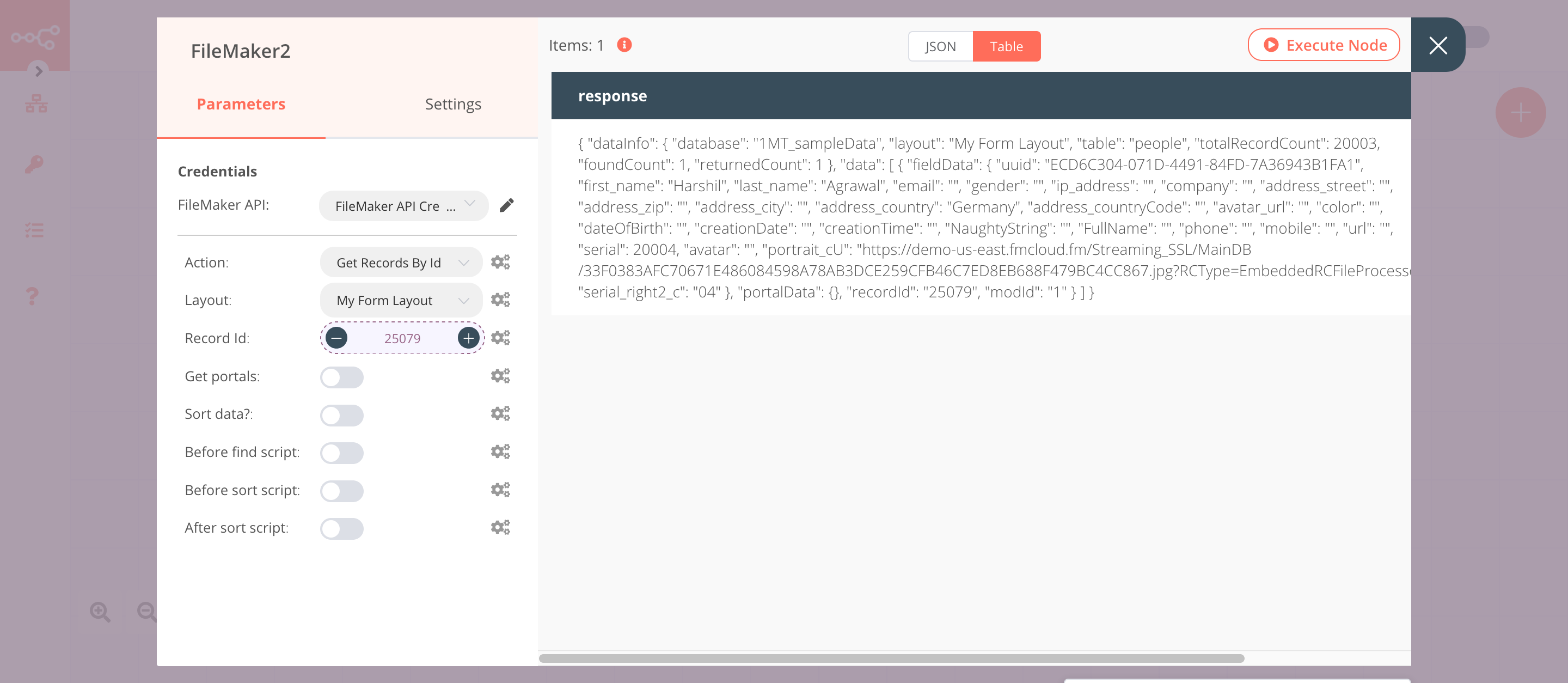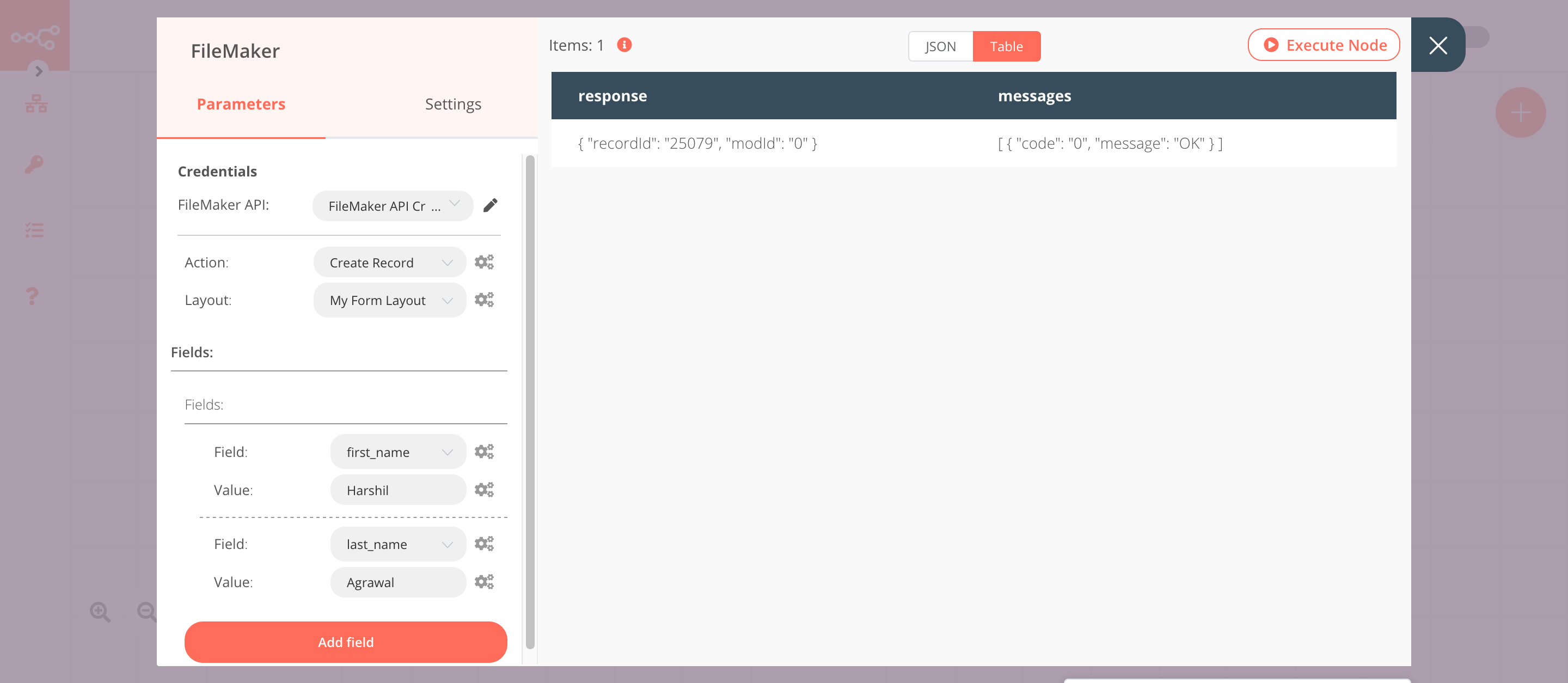FileMaker#
The FileMaker node allows you to automate work in FileMaker, and integrate FileMaker with other applications. n8n has built-in support for a wide range of FileMaker features, including creating, finding, getting, editing, and duplicating files.
On this page, you'll find a list of operations the FileMaker node supports and links to more resources.
Credentials
Refer to FileMaker credentials for guidance on setting up authentication.
Examples and templates
For usage examples and templates to help you get started, take a look at n8n's FileMaker integrations list.
Basic Operations#
- Find Records
- Get Records
- Get Records by Id
- Perform Script
- Create Record
- Edit Record
- Duplicate Record
- Delete Record
Example Usage#
This workflow allows you to create, update, and retrieve a record from FileMaker. You can also find the workflow on n8n.io. This example usage workflow uses the following nodes. - Start - FileMaker
The final workflow should look like the following image.

1. Start node#
The Start node exists by default when you create a new workflow.
2. FileMaker node#
This node will create a new record in FileMaker.
- First of all, you'll have to enter credentials for the FileMaker node. You can find out how to do that here.
- Select 'Create Record' from the Action dropdown list.
- Select a layout from the Layout dropdown list.
- Click on the Add Field button.
- Select a field from the Field dropdown list.
- Enter a value in the Value field.
- Click on the Add field button.
- Select a field from the Field dropdown list.
- Enter a value in the Value field.
- Click on Execute Node to run the node.
In the screenshot below, you will notice that the node creates a new record in FileMaker.

3. FileMaker1 node#
This node will add a new field to the record that we created in the previous node.
- Select the credentials that you entered in the previous node.
- Select 'Edit Record' from the Action dropdown list.
- Select a layout from the Layout dropdown list.
- Click on the gears icon next to the Record Id field and click on Add Expression.
- Select the following in the Variable Selector section: Current Node > Input Data > JSON > response > recordId. You can also add the following expression:
{{$json["response"]["recordId"]}}. - Click on the gears icon next to the Mod Id field and click on Add Expression.
- Select the following in the Variable Selector section: Current Node > Input Data > JSON > response > modId. You can also add the following expression:
{{$json["response"]["modId"]}}. - Click on the Add field button.
- Select a field from the Field dropdown list.
- Enter a value in the Value field.
- Click on Execute Node to run the node.
In the screenshot below, you will notice that the node adds the address_country field to the record that we created in the previous node.

4. FileMaker2 node#
This node will get the information about the record that we created earlier.
- Select the credentials that you entered in the previous node.
- Select 'Get Records by Id' from the Action dropdown list.
- Select a layout from the Layout dropdown list.
- Click on the gears icon next to the Record Id field and click on Add Expression.
- Select the following in the Variable Selector section: Nodes > FileMaker > Output Data > JSON > response > recordId. You can also add the following expression:
{{$node["FileMaker"].json["response"]["recordId"]}}. - Click on Execute Node to run the node.
In the screenshot below, you will notice that the node returns the information of the record.
